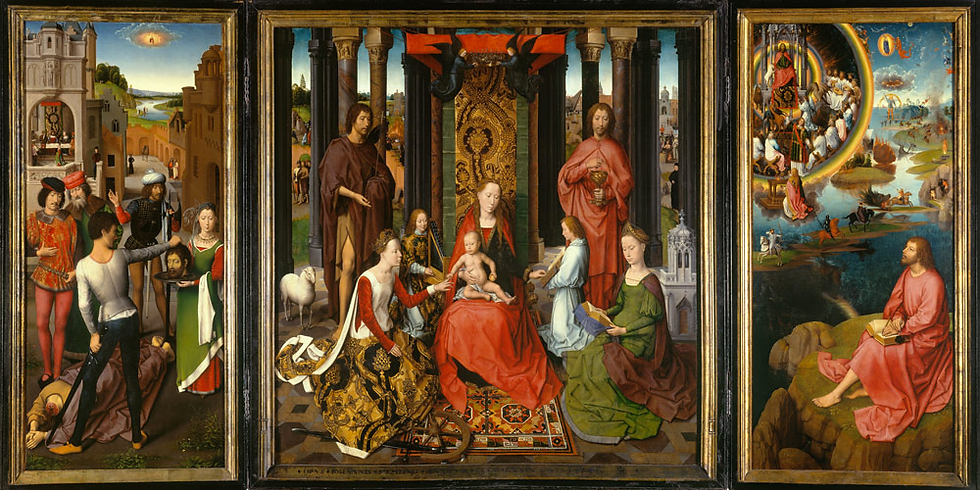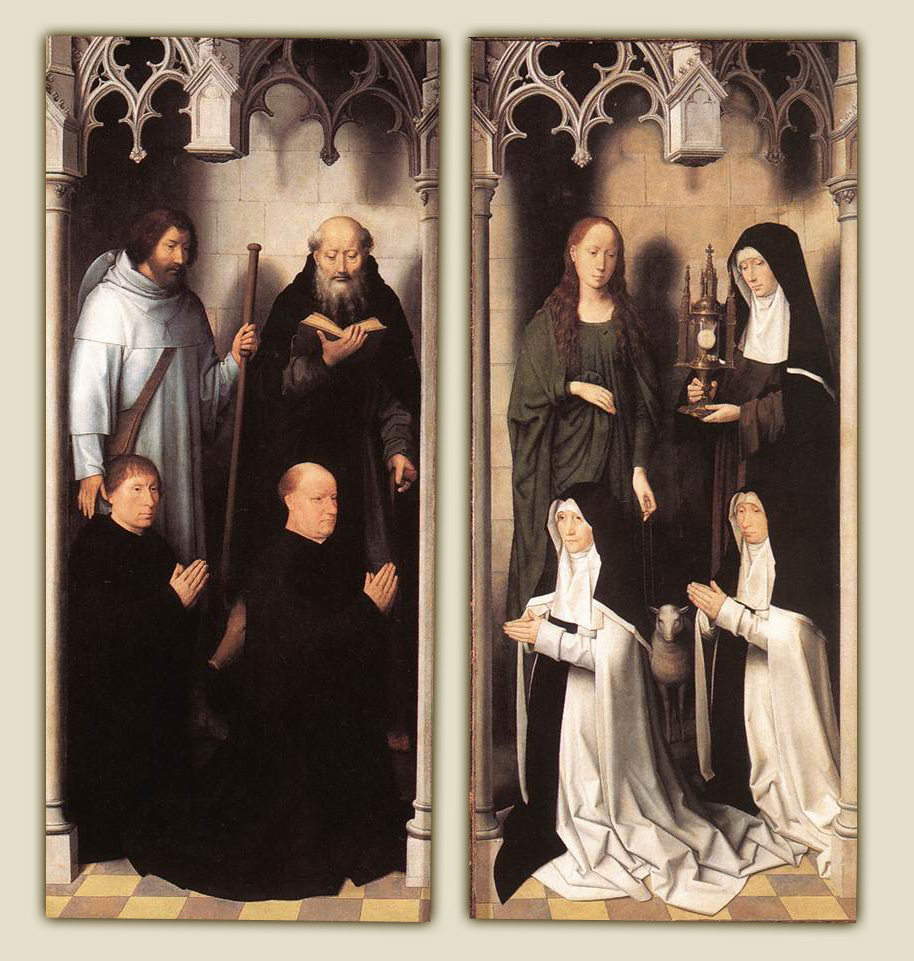ING: St. John Altarpiece: The Inherent Meta of Art
- Yuna Kim
- Feb 9, 2023
- 4 min read
Updated: Nov 8, 2024
I recently watched a show that was similar to Seinfeld, in that it was an episodic, "daily lives of" series focusing on a group of characters as they navigate through life, friends, career, and love. One of the main characters (Person A) is a screenwriter who finds her big break. As the official production process begins, Person A and her team juggle various issues.
Now, all of you may be thinking: what does this TV show, and the idea of product placements, have to do with ings and isms? Everything. Art is many things, one of them being a product: a written, produced, and directed TV series is just a video version of paintings and art movements. It is a modern 3D method opposed to the older methods of 2D expression. And the unifying point for these 3D and 2D arts I am trying to focus on today is one of the struggles Person A dealt with the most: product placement.
Person A and her team complain in a meeting about having to make compromises in the script for product placements-- all while themselves drinking from product-placement water bottles, with the label clearly shown, as a meta jab to the show's own sponsors. At one point, an assistant drafts a nonsensical scenario where the characters in Person A's script would blatantly say they need a massage for the sake of a sponsor, therefore making another comical meta jab at yet another sponsor (and successfully fulfilling the contract stipulations).

The scene from the show's meta inclusion of massage chairs. The show does not have any characters who would use such an item, so the inclusion of this product was only made possible through ironic criticism of the very act of inclusion. The woman is looking at her watch to time the "15 seconds" of exposure requested by the sponsorship company.
Product placement is funding, it is money. And money is one of the most common struggles artists and creatives face. It was fascinating to see Person A complain about how she had to change the way she wrote a certain scene because a water bottle company or a massage chair company had offered sponsorship. This made me consider painters and sculptors who have faced this similar struggle over the history of Western Art.
For example, altarpieces of the Northern Renaissance are commonly known to depict the patrons (sponsors) who had paid for their production. This makes complete sense for privately owned altarpieces-- and is in fact justified-- but for public altarpieces in churches, it becomes a bit more food for thought.
One such altarpiece is the beautiful St John Altarpiece by Hans Memling. Memling was one of the most respected and commissioned masters of his time, meaning his artistic decisions would not have been made lightly, and that his works would have been seen by many.

St John Altarpiece (Triptych of John The Baptist and John The Evangelist), Hans Memling, c.1479. Oil on oak panel. 173.6 × 173.7 cm (central panel), 176 × 78.9 cm (each wing), Memlingmuseum, Sint-Janshospitaal, Bruges.
Patrons could be anybody from royalty to nobility, or even merchants and religious community leaders such as abbots and prioresses. The inclusions of these figures in altarpieces painted with biblical scenes amusingly bears resemblance to the incongruous product placements incorporated into a scene of a show where the product is irrelevant: after all, any patron of these religious altarpieces in the fourteenth and fifteenth centuries, no matter how old or important, would actually have been present at the Birth of Christ or the Resurrection. It made me chuckle to think how a King or nun is basically, in this context, no different from a corporate-pushed water bottle or massage chair.
Take a look at the patrons on the exterior of this Memling altarpiece. They were cleverly placed on the exterior panels of the altarpiece, so that the patrons are only visible when the altarpiece is closed. Not to say that this was done exclusively or that this is a negative decision, since some altarpieces have patrons in the center interior panel right next to the biblical figures, and public altarpieces were more often left closed than open. However, in this case, this altarpiece perfectly agrees with our view of how inclusion of foreign elements by the artist was a financial necessity, and was an action treated as such: strictly necessary, no more and no less.
The patrons are respectfully depicted and are not treated ironically as the TV show had treated its sponsors. This is a key difference, but I would say that difference in attitude is only because the altarpiece is a religious work within a religious context, dealing with a purpose other than money and mass media broadcast. It is not a work driven solely by money and ratings. That is why I say art is money, but it is also many things. Inversely inclusive.

The altarpiece when closed. The donors are the four kneeling figures: the two on the left wing are Jacob de Ceuninc and Antheunis Seghers; the two on the right wing are Agnes Casembrood and Clara van Hulsen. All four were actual figures working at the hospital in Bruges where this painting (altarpiece) still is today. The hospital is now a museum.
This all came to me while watching a twenty-first century show about twenty-first century problems. The entertainment industry and urban romantic drama are themes that stray far from the panel altarpieces of the Northern Renaissance. However, the connection was possible through the timeless, and borderless, topic of money. Money has spurred on cultural production, whether we like it or not. Whether we like it or not, money is needed for an artist's paints and brushes, a creator's computer and graphic design programs, a modern day screenwriter's funding for paper-to-screen.
Funding for the arts is important. With this amusing anecdote, short history lesson, and very real reflection of what art is to society, I hope that you may carry on with your day with the thought that money can be spent in very effective and meaningful ways, or just as wastefully. I personally, will buy my friend in the production industry a water bottle the next time I see her. Unfortunately, I don't know any panel painters yet.
Comments